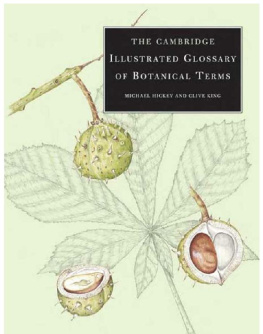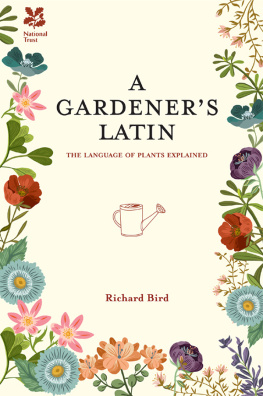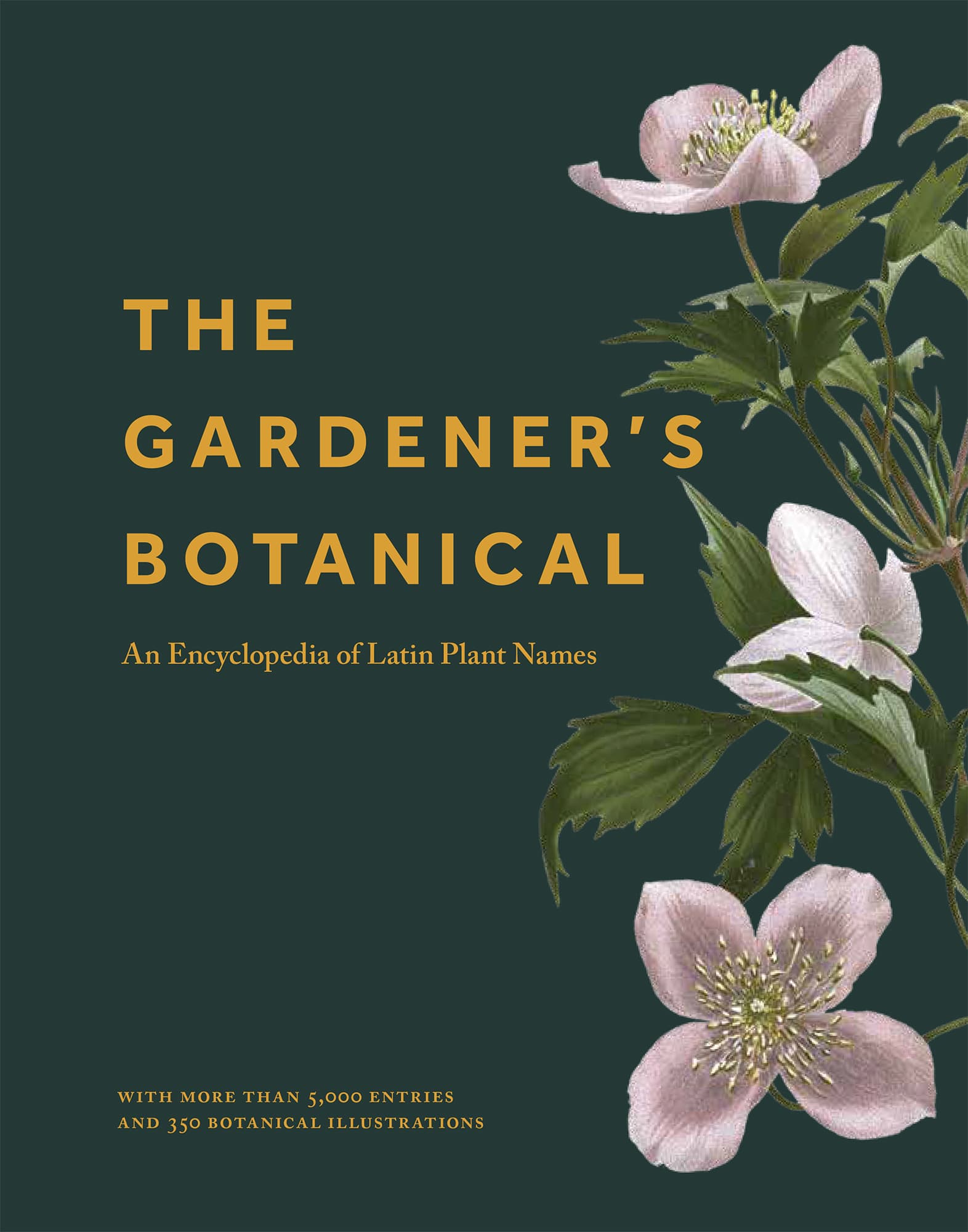The Gardeners Botanical
An Encyclopedia of Latin Plant NamesROSS BAYTONwith more than 5,000 entries and 350 botanical illustrations Princeton University Press Princeton and Oxford
Introduction
For any gardener, knowing the names of the plants in your care is crucial. Not only does it let you share what you are growing with friends and family, it unlocks a world of useful information, both in books and online, helping you to make the best of the plants you grow. But why do the names have to be in Latin? Many garden plants have English names that are much easier to remember. The trouble is, those names vary depending on who you talk to. In the United States, bluebell is a common name for plants in the
Mertensia genus, but in Scotland a bluebell is
Campanula rotundifolia and in England it is
Hyacinthoides non-scripta. Not surprisingly, there are other bluebells, including desert bluebell (
Phacelia campanularia) in California and royal bluebell (
Wahlenbergia gloriosa) in Australia.
There are even bluebell creepers, Clitoria ternatea in the United States and Asia as well as Billardiera heterophylla in Australia. With bluebells occurring seemingly worldwide, it is essential for each to have its own unique name, because the cultivation requirements for an English bluebell differ widely from those of its Antipodean namesakes. The decision to use Latin for this naming system stems largely from its historical use by scholars. A university education in the eighteenth century required familiarity with both Latin and Greek, allowing for students to access the works of classical writers from ancient Greece and Rome. Much of the Latin in use in horticulture is actually derived from Greek. How botanical Latin has changed over time, and botanical art alongside, is discussed shown .
The enduring benefits of using this botanical tongue are that scientists, growers, and gardeners can communicate about plants with accuracy, no matter what language they speak. So whether it is bluebell (Scotland), harebell (England), bluebell-bellflower (United States), campanilla (Spanish), campanule feuilles rondes (French), or rundblttrige glockenblume (German), it is universally Campanula rotundifolia. Latin names are not static, however, and new information is always being discoveredshown we look at how DNA is revealing old and new relationships between plants. Understanding Latin names brings other benefits. Most obviously, they can reveal useful information that is helpful to the gardener. Toxicodendron is best avoided, while silky soft Alchemilla mollis is a pleasure to touch. Toxicodendron is best avoided, while silky soft Alchemilla mollis is a pleasure to touch.
Botanical Latin has other practical uses, too, which are discussed shown . Latin names also reveal fascinating stories, such as the tale of French diplomat Jean Nicot, who popularized tobacco, which now bears his name (Nicotiana), or the moving account of a promising Scottish botanist who fell during World War I and is commemorated for evermore (Briggsia). Delve into our dictionary of botanical Latin and you will find interest, inspiration, and intrigue in equal measure.
French diplomat Jean Nicot is immortalized in the Latin name for tobacco,
Nicotiana tabacum.How to Use This Book
The following section of the book contains about 5,000 Latin botanical terms arranged alphabetically. These are terms that you might come across either for the genus or the species name of a plant. The term appears first, then a guide to pronunciation.
The following line provides the feminine and neuter versions of the name, if applicable, followed by the etymology of the word. This will explain the meaning (or meanings) behind the Latin term. For the genus entries, the family name is also included in parentheses at the end. An example of a plant name that features the term is also supplied. Where variations in spelling occur, they are grouped together, as in: cashmerianus kash-meer-ee-AH-nus cashmeriana, cashmerianum cashmirianus kash-meer-ee-AH-nus cashmiriana, cashmirianum cashmiriensis kash-meer-ee-EN-sis cashmiriensis, cashmiriense From or of Kashmir, as in Cupressus cashmeriana Where a genus term can also be used for a species, it is included in parentheses afterward. At the end of the book is an index of 2,000 of some of the most frequently used common names.
Here, you can look up a plant that you know by its common name and find the Latin name. You can then look up what the Latin term means in the alphabetical listings section. Pronunciation of botanical Latin can vary, so the examples provided here are a guide rather than a definitive directive. Capital letters indicate where the stress should fall. Where gender variations occur, pronunciation is given for only the masculine version. Most gardeners will have encountered plants that seem to have not only numerous common names but also variations in their Latin appellations.
Some epithets, which were once in wide usage, have now become obsolete, perhaps due to reclassification of the plants to which they were once applied. However, because these names may still sometimes be found in old horticultural works, as synonyms in modern texts, or when browsing the varied sources of the Internet, they have been included for completeness. The RHS Plant Finder by the Royal Horticultural Society in England provides a general guide to current nomenclatural opinion, if required, that is often used internationally as a reliable up-to-date source, but you can also check the USDA plants database for plants by their scientific or common names. Helped by an informed understanding of botanical nomenclature, it is hoped that gardeners will be able to make better gardens filled with better plants; plants that sit well in their site, thrive in the conditions provided for them, and have the form, habit, and color that make for the most aesthetically pleasing association with their neighbors.

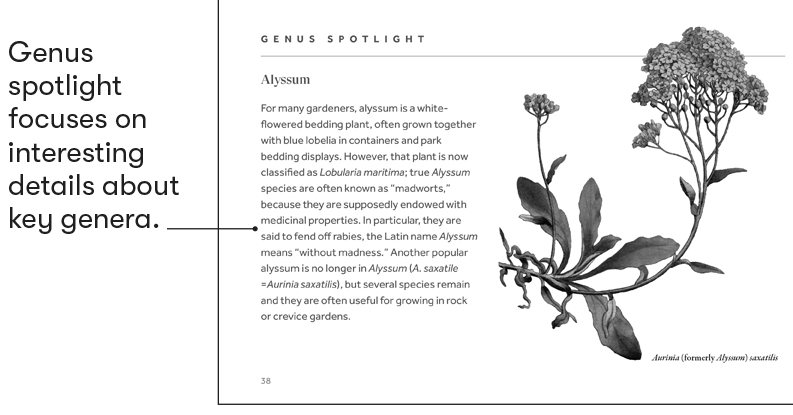
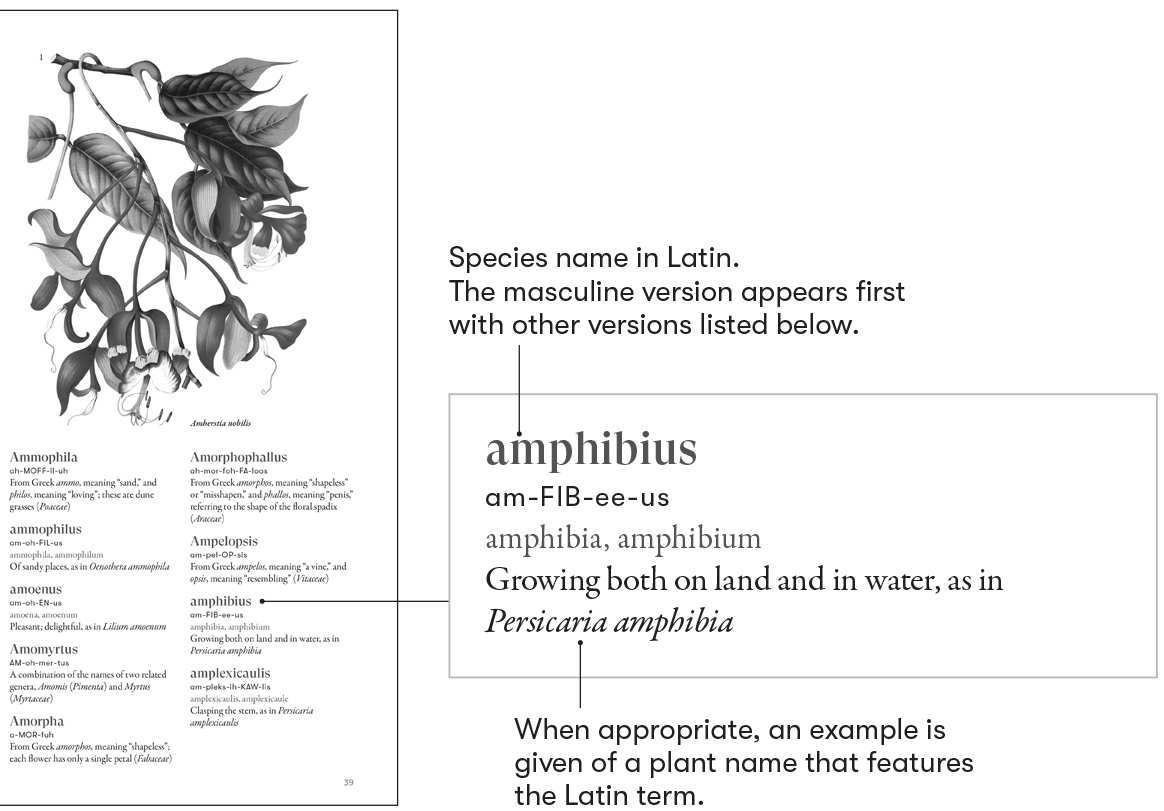

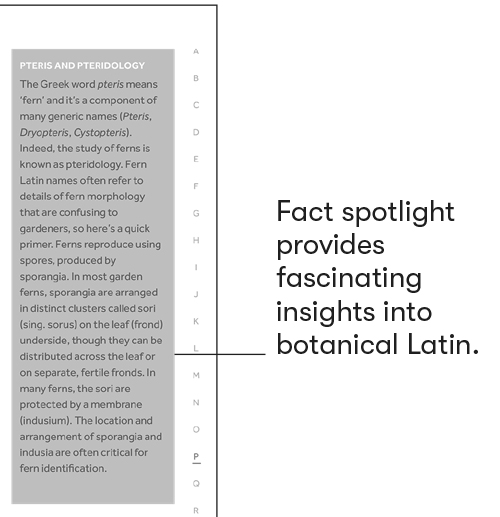
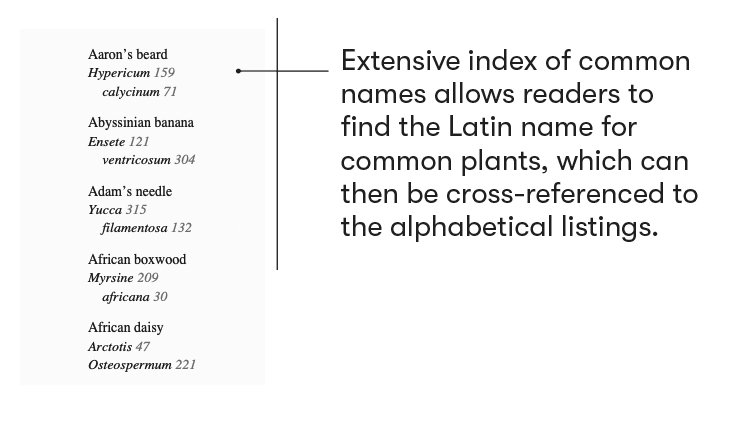
A Guide to the Use of Latin
When writing Latin names, it is important to order the various elements in the correct sequence and observe typographical conventions. This is a simplified outline of the binomial system, so there are exceptions to these rules, along with further complexities of structure.








